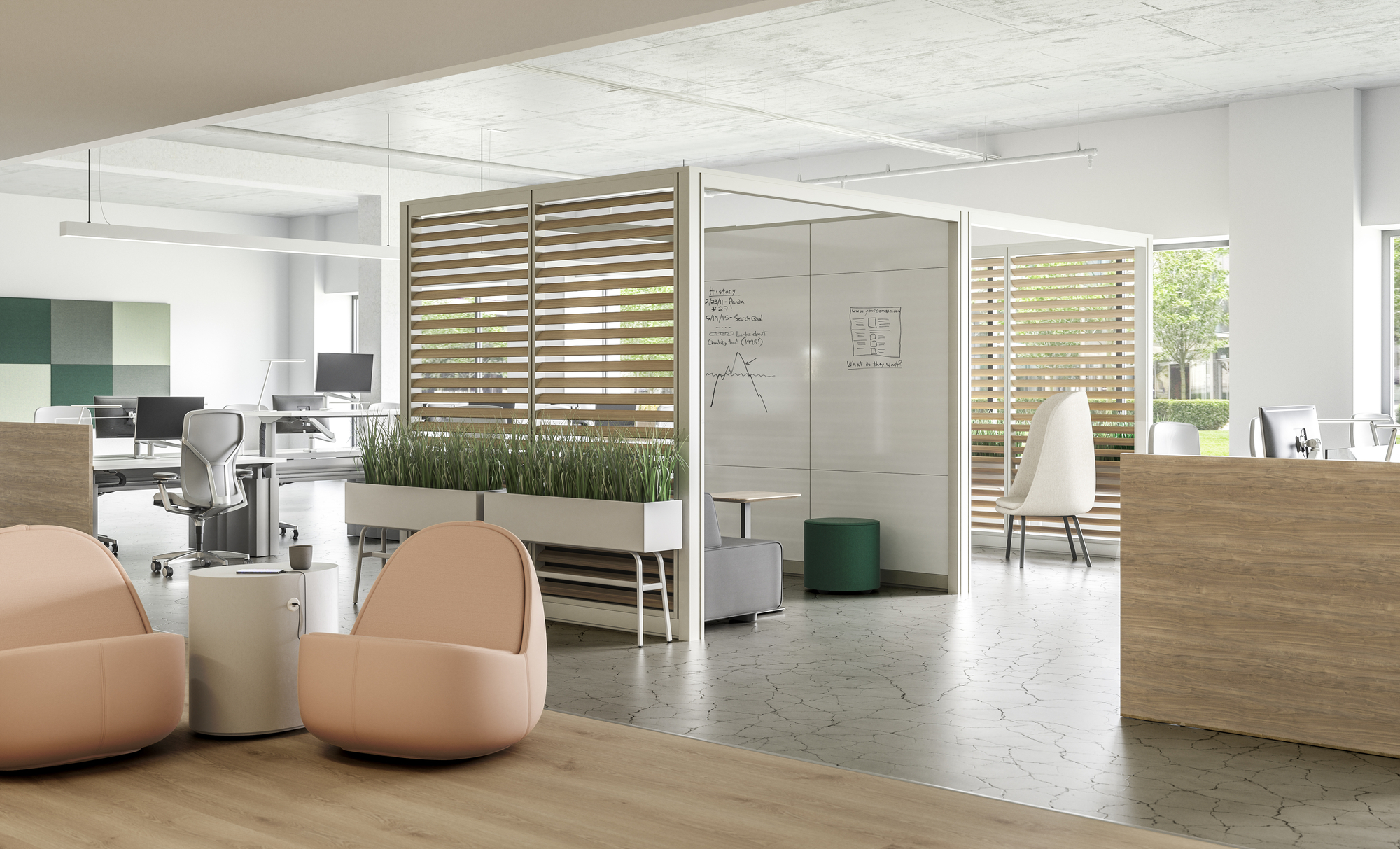The Evolving Workplace: How to Become and Stay Relevant
February 2, 2022By Jan Johnson, VP of Design and Workplace Resources, Allsteel
Given all that is being discussed and prognosticated these days about what’s next in workplace-making—much of which is on-point and insightful—we’re adding to this rich conversation with several viewpoints we’d like to share. Our intent is to ask and answer what’s really important to get right.
Start by taking a step back to consider the purpose of the office:
The highest and best use of the office is to promote social cohesion.
Several years ago, we sponsored research that found social cohesion to have THE highest (scientifically proven) correlation to knowledge worker productivity—specifically team productivity. More recently, my colleague Jeff Leitner also identified studies that suggest that social cohesion is also highly correlated to individual performance, motivation, engagement, and learning outcomes; helps workers manage fear, stress, and anxiety; and reduces burnout.
Workplace design can help organizations to strengthen social cohesion.
Social cohesion has four dimensions: Fairness (read: equity), Authenticity, Interdependence and Belonging. Both the design process (design as a verb), and its recommendations (design as a noun) can promote these qualities. For example, activity-based planning is inherently more equitable than status or one-size-fits-all as a way of allocating space and encouraging users to select the most supportive/ conducive space to perform a given task. Additionally, involving users in co-creating their activity-based neighborhoods increases feelings of interdependence and belonging and can inspire a sense of ongoing stewardship.
Ideation/Collaboration/Development activities are just easier and more effective face-to-face in appropriately provisioned settings.
While distributed work inherently gives workers more places to work—home, coworking, coffee shop etc.—and the autonomy to come and go as they need to, a tech and resource-rich office is an optimal place to do complex collaborative activities: problem solving, idea generation, process improvements. Having said that, it’s equally important to create an equitable experience that can really engage anyone who joins the session remotely.
Then consider ways to reduce or effectively hedge against all the uncertainty swirling around us:
Organizations will go through a series of “shakedown cruises.”
With all the best intentions, solid research and inclusive discussions about how things might work once folks come back, workers will very likely spend several months experimenting with distributed work patterns, free-address, technology and new team norms – while managers learn to support them more effectively. Plan for it.
Workers’ behaviors and utilization tracking data will tell us how they’re using the office over time.
And how the office is, in turn, supporting their needs and preferences. Analytics will tell us what spaces are oversubscribed and what’s going unused—so organizations can make the physical changes that will “adjust the mix” – optimizing user experiences and space utilization over those many months, and into the future.
Workplaces should be designed for continuous improvement.
Consider using modular planning and a thoughtful “spatial kit of parts” that minimizes the effort and disruption of reconfigurations as organizations adjust the mix over time. Even after the shakedown cruise period, there will be internal changes and outside events that will require the workplace to evolve.
